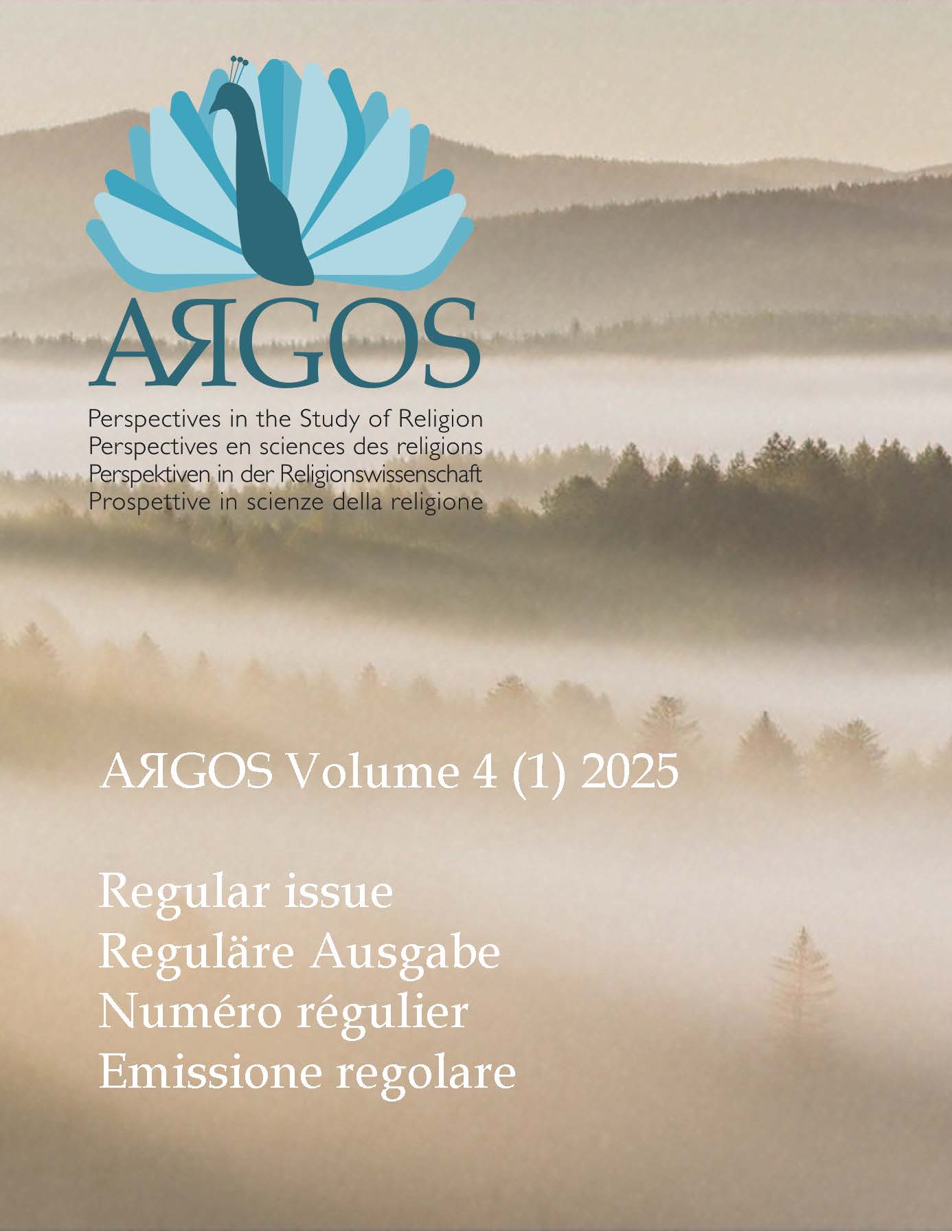Special Issue: Towards a Global History of Religion
▲Résumé
This article highlights some important conclusions in Karénina Kollmar-Paulenz’s study, “Lamas and Shamans,” and offers some reflections on its relevance for the study of religion more broadly. It argues that comparing the Tibetan/Mongolian process of creating a classification system for religion(s) with the parallel and analogous process in “Western” discourses can yield important insights, especially for the endeavor of category formation, which is crucial in Religious Studies.
▲Résumé
This article examines the relationship between two contemporary perspectives on conceptualizing a global history of religion. The first is anchored in an entangled conceptual history, reconstructing the genealogy of “religion” back to the colonial nineteenth century. The second favours a multicentred perspective in studying knowledge systems and general concepts independent of the West and predating global modernity. By analysing Japanese religious history, the article illustrates both the potential for and the necessity of integrating these two approaches.
▲Résumé
This piece takes as a starting point a close reading of Karénina Kollmar-Paulenz’s work and connects it to ongoing debates intersecting the fields of religious studies, the anthropology of religion, sensory studies, Global South studies and decolonial theory. It argues that attention to the layered history of local language categories that articulate religious difference constitutes a form of intellectual labour towards epistemic justice.
▲Résumé
In her work on “Lamas and Shamans,” Karénina Kollmar-Paulenz takes a broad aim at the role of non-European knowledge in the humanities and social sciences. In this commentary, I take up some lines of inquiry that structure her argument, discussing them in the broader contexts of research on global history and continuing attempts to assess the status of categories deriving from non-European intellectual traditions.
▲Résumé
Karénina Kollmar-Paulenz affronta la sfida della comparazione nel campo dello studio della religione invocando una “provincializzazione dell’Europa”. La sua indagine del contesto mongolo decentra lo sguardo occidentale sullo sciamanesimo e lo costringe a osservare inediti processi di contatto che hanno generato forme di classificazione delle “religioni degli altri”. In questa prospettiva, l’osservazione di questi processi di definizione offre una decisiva lezione di metodo per le discipline storico-religiose.
▲Résumé
Karénina Kollmar-Paulenz presents an approach to religious studies that combines source interpretation with critical theoretical reflection. She questions European dominance in defining religion and argues for a globalised, multicentric method that includes European and non-European perspectives on an equal footing. However, her approach still faces the challenge of decentralising Europe as the primary conceptual reference in this field.
▲Résumé
The contribution discusses Karénina Kollmar-Paulenz’s programme for a global history of religion. Her approach aims to challenge European hegemony over the analytical concept of ‘religion’ by incorporating non-European realms of experience into theories of religious studies. This provokes the question which epistemological interest is associated with this objective. Why should an academic discipline, whose theories and concepts are shaped by European discourses, integrate non-European perspectives? Several possible answers to this question are examined.
▲Résumé
The paper discusses the works by Professor Karénina Kollmar-Paulenz on Mongolian shamanism and Buddhism, embedded within the concept of a global history of religion. Contextualised within the debate on the existence of emic terms for “religion” outside of European epistemological traditions, the paper examines the disputes that Kollmar-Paulenz’s approach has engendered among scholars engaged in post-structural paradigms and presents an argument for their theoretical reconsideration.
▲Résumé
In this response to Karénina Kollmar-Paulenz’s celebrated essay on non-European concepts in the global study of religion, I discuss the possibility for religious innovation in a socio-religious situation stabilised by objectified elite perspectives by reference to formative teachings and practices in Tenrikyō, a religion founded by Nakayama Miki in 1838. Nakayama Miki’s deviation from the knowledge system of “nourishing life” (yōjō), especially in regard to perinatal food taboos, analysed here on the basis of hagiographical accounts of the foundress, aimed to free humans from all food restrictions. By concentrating on the traditional Japanese “nourishing life” system and its food regulations as an identity marker of the “other”, proponents of freedom from them, as taught by the foundress, contributed in some way, paradoxically, to the stabilisation of the norms.
▲Résumé
▲Résumé
Seeking to extend Karénina Kollmar-Paulenz’s (2024) methodology for overcoming Eurocentric perspectives in the global history of religion, this commentary evaluates the challenges and alternatives for historiography when textual sources for religious practices are absent. Drawing on research into artistic, visual, and oral practices in Mongolia and the Himalayan region, the authors propose a critical reassessment of the foundational notions of globality, history, and religion.
▲Résumé
En complément au défi posé par Nina Kollmar-Paulenz à la rhétorique dominante de la supériorité de l’historiographie européenne, cet essai apporte une perspective tibétaine sur l’historiographie religieuse. Présenté dans le contexte dual des traditions religieuses bouddhiste et Bon, cet essai propose la traduction et l’analyse d’une étude généalogique sur une divinité protectrice masculine, Abse, profondément enracinée dans les sources littéraires tibétaines.
▲Résumé
The article reflects on religion both as a concept and as a field of studies from a transcultural perspective, linking it to current developments in folkloristics. It sheds light on the methodology of vernacular religion, a concept introduced by Leonard N. Primiano in the 1990s, which gained momentum in the 21st century with attention shifting from the institutional and scriptural forms of religions to vernacular beliefs, narratives, and practices in daily life.
AЯGOS is a multilingual online journal for the study of religion that seeks to build bridges between Europe’s distinct academic cultures. AЯGOS publishes original, peer-reviewed papers in English, German, French, and Italian. These present, comment upon, and further develop established and contemporary perspectives in the study of religion. AЯGOS also aims to bring current approaches in the study of religion and cognate disciplines into conversation with one another. Historical and empirical studies are expected to have strong theoretical underpinnings.
AЯGOS also includes translations of previously published key texts that can provide valuable theoretical and methodological impetus to debates in the study of religion. Each of these translations is accompanied by an introduction and a substantial commentary highlighting its relevance for the international community of scholars of religion.
A book review section in various European languages complements AЯGOS’ main objective of making important scholarly work known beyond its original context.
AЯGOS is published online as an diamond-open-access journal with no restrictions. It does not charge publication fees to authors. The journal is managed by an Editorial Board, the Editing Manager and an Academic Advisory Board. Members of the Editorial Board have an equal say on editorial decisions. AЯGOS is committed to ensuring that both boards include younger researchers, in particular, and to striving for a balanced gender ratio.
AЯGOS is now open for the submission of articles.
If you would like to suggest a book for review, please contact our reviews editor, Prof. Anja Kirsch, by e-mail. If you would like to write a book review, you can find the selection here.
In Greek mythology, AЯGOS is the watchful guardian with a hundred eyes who can see in all directions at once. After Argos’s death, the goddess Hera preserved his eyes in the peacock’s tail. Argos is also one of the Argonauts and the mythical constructor of the ship Argo in which Jason and his companions searched for the Golden Fleece.
Article
▲Abstract
In Switzerland and France more than half of the catholic priests are over 75 years old. Yet, according to canon law at this age they usually must leave their pastoral responsibilities and may retreat from their ecclesial life. Facing the perspective of a church without priests, and enhancing a moral discourse in which human dignity and the exemplarity of the clergy entangle, the diocesan organizations have shown only recently a preoccupation about the ageing of their priests. Here, we develop an empirical framework for a sociology of ageing priests that considers the importance of their national and diocesan contexts. Our aim is to review the category of “ageing priests” through its contemporary heterogeneity. We use a grounded theory approach in qualitative sociology to examine different situations of this social category. Our considerations cross theological examples of aging priests in the Catholic Church, the statements of caregivers, and the “lived” heterogeneity of aging priests themselves. We aim to document the current adaptations and new versions of Catholicism after the Second Vatican Council in the light of current gerontological norms that apply to the clergy.


